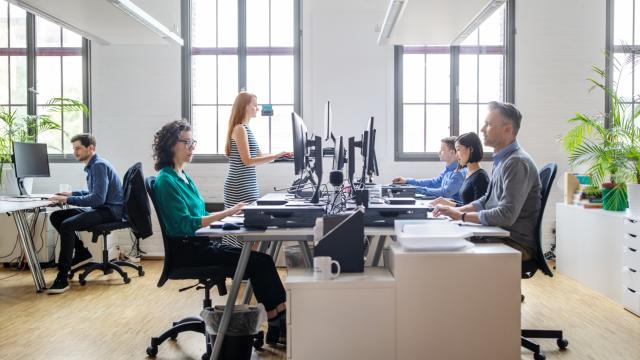Across the country, employers are trying to get employees out of their work-from-home routines and back to the office. But, now that they've survived the pandemic, many of those same employees have prioritized their health and wellness and are voicing concerns about the air quality of their workplaces. While it's critical for employers to address the concerns, it's also important to find solutions that won't increase energy use and costs.
Indoor air quality is a valid concern
The truth is that the very nature of indoor air quality presents a number of health challenges. According to the Environmental Protection Agency (EPA), concentrations of some pollutants are often two to five times higher indoors than typical outdoor concentrations. Many owners are taking action to improve the air quality throughout their buildings by using EPA-recommended methods of removing pollutants from the air, such as installing portable air cleaners and installing high-performance air filters.
While these measures can be effective, some studies have shown that these initiatives can actually lead to unintended consequences like increased annual energy consumption. This is especially true when upgrading to high-performance MERV 13 or 14 air filters recommended by ASHRAE to reduce the risk of airborne transmission of viral infections.
Solving a dual challenge
Today's building owners are seeking to achieve sustainable indoor air quality (IAQ) — a dual challenge that includes addressing the health effects of poor indoor air quality without increasing energy use. Some of the solutions that are available include installing low-cost, low-energy localized HEPA filters, which typically require the same amount of power as a medium-intensity light bulb and can clean indoor spaces of up to 1,200 square feet.
More value can be added by activating localized filters in areas where people congregate and avoiding their use in unused areas — for more effective use of the purification system and reduction in energy use.
One school of thought advocates the use of an optimum combination of air cleaning, filtration, and ventilation. This Clean First framework provides recommendations for building owners seeking to achieve today's building decarbonization and climate resiliency goals:
- Deploy MERV-13 filters in HVAC systems.
- Deploy in-room HEPA filters to clean the indoor air.
- Optimize ventilation with energy recovery and heat pump systems.
- Monitor indoor air quality continuously.
- Automate air cleaning and ventilation by integrating sensors and tracers with the building management system.
The growing number of employees returning to work, the federal government's focus on the importance of indoor air quality, and the pressing need to improve the energy performance of commercial buildings present a perfect storm of reasons to seek a solution for sustainable IAQ. The good news is today's technology provides new solutions for indoor air purification that can also help reduce energy use.
September 2023 Water & Electric Key Accounts
From industry trends and best practices to sustainability initiatives, our monthly Connections Newsletter provides valuable insights, updates, and resources to support our large business customers.
Full Newsletter